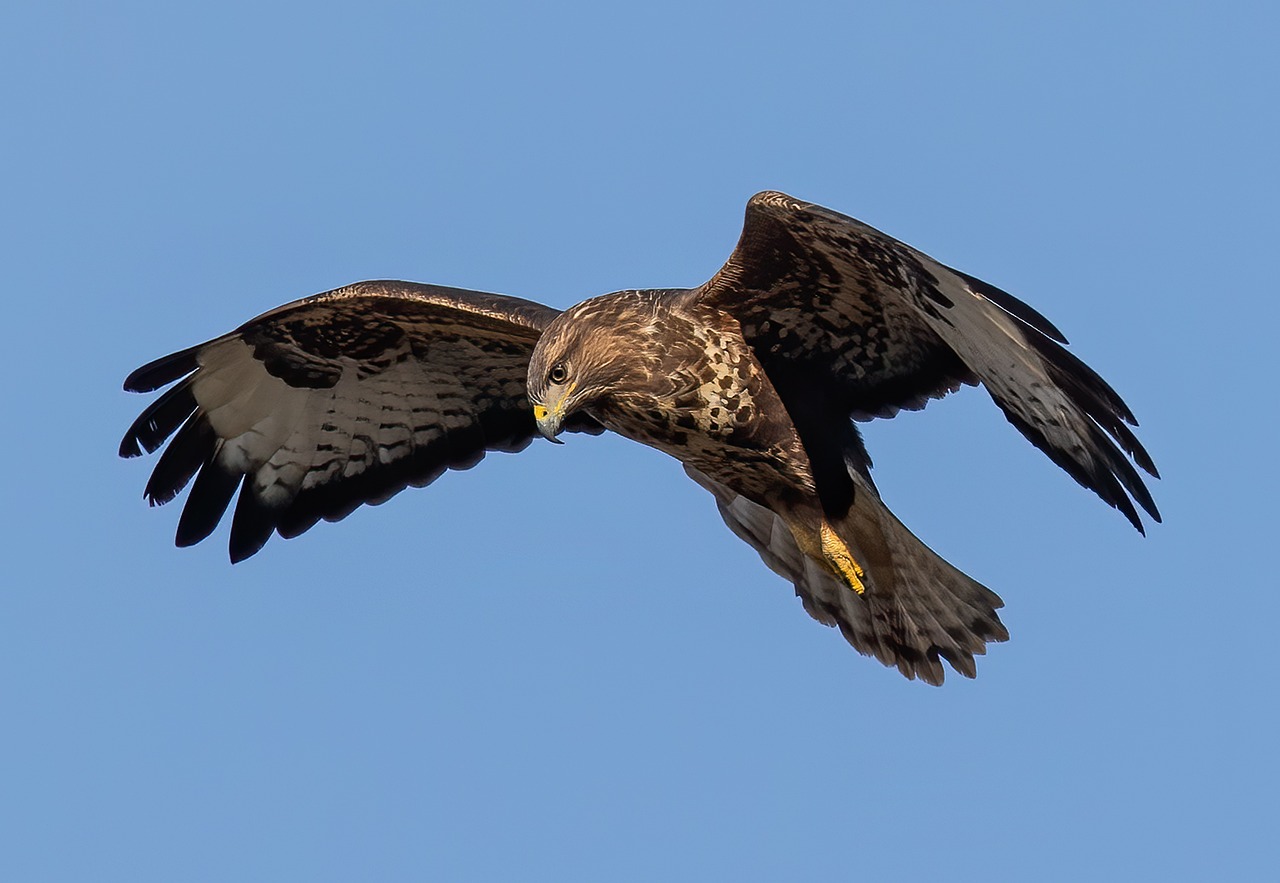
The buzzard’s impact in Southeast England
Increasing Numbers and Its Impact on Wildlife and Ecology
In recent decades, the common buzzard (Buteo buteo) has been making an unprecedented comeback across the British countryside; this is most notable in the Southeast of England. Once a rare sight within my lifetime; buzzards and their familiar call are becoming a familiar presence in rural landscapes, and their rising numbers are beginning to reshape the local ecosystem.
Buzzard Recovery: A Success Story
Historically, buzzards like many other predatory animals were widely persecuted throughout the UK, primarily due to gamekeeping practices in the 19th and early 20th centuries. Coupled with habitat loss and the widespread use of harmful pesticides like DDT in the mid-20th century, buzzard populations faced a steep decline, leaving many parts of southern and eastern England devoid of this once-common bird of prey. DDT, or Dichlorodiphenyltrichloroethane which really slips off the tongue, is a pesticide that accumulates within the food chain in a process called biomagnification. Whilst a rabbit itself may not be impacted if it happens uponsome grass contaminated with DDT, the unlucky rabbit mayin turn find itself being ingested by a buzzard. DDT as a result accumulates within the Buzzards body and interferes with the calcium metabolism process. The overall impact is that DDT effects the Buzzards ability to lay down the necessary layers of calcium in egg formation and produces a brittle, fragile eggprone to breaking during incubation.
However, following the ban on DDT and an overall improvement in wildlife protection laws, including the Wildlife and Countryside Act of 1981, buzzard populations began to recover. The southeast of England, once unsuitable due to habitat destruction and persecution, has now become an increasingly favourable environment for these birds. Today, buzzards are thriving thanks to legal protections, better habitat management, and reduced persecution.
Rising Numbers in the Southeast
Buzzard sightings in the southeast alongside their fellow raptors, once an uncommon event, are now routine. In counties such as Kent, Surrey, Hampshire, and Sussex, populations have surged, with buzzards frequently observed soaring over fields, and swooping through the treeline when disturbed. According to surveys conducted by the British Trust for Ornithology (BTO), the buzzard population has steadily increased over the past few decades, becoming one of the most numerous raptors in the UK. Estimates suggest that the UK buzzard population now numbers around 70,000 breeding pairs, with the southeast representing one of the regions with the most significant recent growth.
Ecological Impact of Buzzard Resurgence
While buzzards are a top predator, their impact on the southeast’s wildlife and ecology is complex. As generalist feeders, buzzards have a varied diet that includes small mammals (particularly rabbits and voles), birds, reptiles, carrion, and invertebrates. Their role as predators and scavengers helps maintain a balance within the ecosystem, but their rising numbers have prompted discussions about their effects on wildlife and agricultural landscapes.
Conversely, some conservationists worry that buzzards could deplete certain species of small mammals, which are essential prey for other raptors and predators.
Potential Challenges and Conservation Management
The growing number of buzzards in southeast England has sparked some concerns, particularly among farmers and gamekeepers. While the bird is protected by law, there have been calls for careful management, especially where buzzards are perceived to threaten livestock (such as young lambs) or game birds such as pheasants and partridge. This ties in with themes identified in the article surrounding the reintroduction of small predatory mammals such as the pine marten.
To address these concerns, wildlife management bodies like Natural England have granted limited licenses to control buzzard populations in specific cases, though such measures are rare and highly regulated. Overall, most evidence suggests that buzzards are not a significant threat to livestock or game birds when compared to other factors, such as disease or climate change.
Looking Forward: Buzzards and a Balanced Ecosystem
The resurgence of buzzards in the southeast of England is a remarkable example when, given breathing space, nature tends to restore a natural balance. Their presence is a reminder of the importance of top predators in maintaining healthy ecosystems. As natural regulators of small mammal populations and efficient scavengers, buzzards play a vital ecological role that benefits both wildlife and agriculture.
However, as buzzard numbers continue to grow, it will be important to monitor their impact on other species and the broader ecosystem. Striking a balance between conserving these majestic birds and addressing the concerns of farmers and conservationists will require ongoing research and a collaborative approach.
In conclusion, the increase in buzzard numbers in southeast England is a testament to successful conservation efforts and habitat recovery. Their presence is enriching the region’s biodiversity, though it also presents new challenges that must be carefully managed. With thoughtful planning, buzzards can continue to soar as a symbol of wildlife restoration while coexisting with the needs of both people and nature.

Unit 9, Honeycrest Industrial Estate,
Lodge Road, Staplehurst,
Kent TN12 0RX
